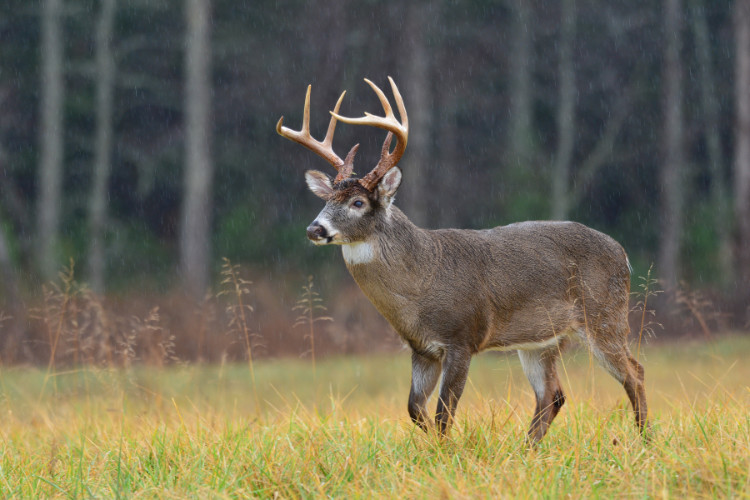
White-tailed deer - Forst Eibenstein
The white-tailed deer, also known as the white-tailed deer or Virginia deer, is a majestic species of deer native to North America. With its imposing antlers and elegant appearance, the white-tailed deer is an impressive symbol of wilderness and a popular target for wildlife watchers and hunters.
The white-tailed deer is a relatively large deer, with males being significantly larger than females. They can reach a shoulder height of up to 1.20 meters and weigh up to 180 kilograms. Their characteristic feature is the antlers, which in males develop each year in the spring. The antlers are imposing in size and branching, and serve males both as a weapon in the fight for females and to impose themselves on other deer.
The coloration of the white-tailed deer varies depending on the season. In summer, the coat is reddish-brown with a conspicuous white patch at the end of the tail, which gives the species its name. In winter, the fur changes to a thicker, gray-brown fur that gives them better protection from the cold temperatures. The animals also have a white throat and belly.
The white-tailed deer inhabits a variety of habitats, including forests, grasslands, and wetlands. They are widespread in North America, occurring from Canada to South America. White-tailed deer are herd animals and live in family groups led by a dominant male called the “stag.” The females, known as “cows,” and their calves make up the bulk of the herd.
The diet of the white-tailed deer consists mainly of plant material, such as grasses, herbs, leaves, buds and bark. In winter, when food supplies are scarce, they may also move into agricultural fields and cause damage. Nevertheless, they play an important role in seed dispersal and maintaining plant diversity in their habitats.
Reproduction in white-tailed deer takes place in the fall. During the mating season, also called the rut, males engage in spectacular battles for dominance and the right to mate with females. The fights are often accompanied by loud roars and impressive displays. The gestation period of females is about seven to eight months, and one or two calves are born in the spring. The mother lovingly cares for her young and hides them in dense bushes to protect them from
Protect predators.
The white-tailed deer is a symbol of the wild landscapes of North America and an important species in ecological diversity. However, they are also subject to various threats, such as habitat loss, hunting, and traffic accidents. Protecting their habitats and sustainable hunting practices are critical to maintaining their populations and ensuring that future generations can experience the beauty and elegance of these majestic animals.
